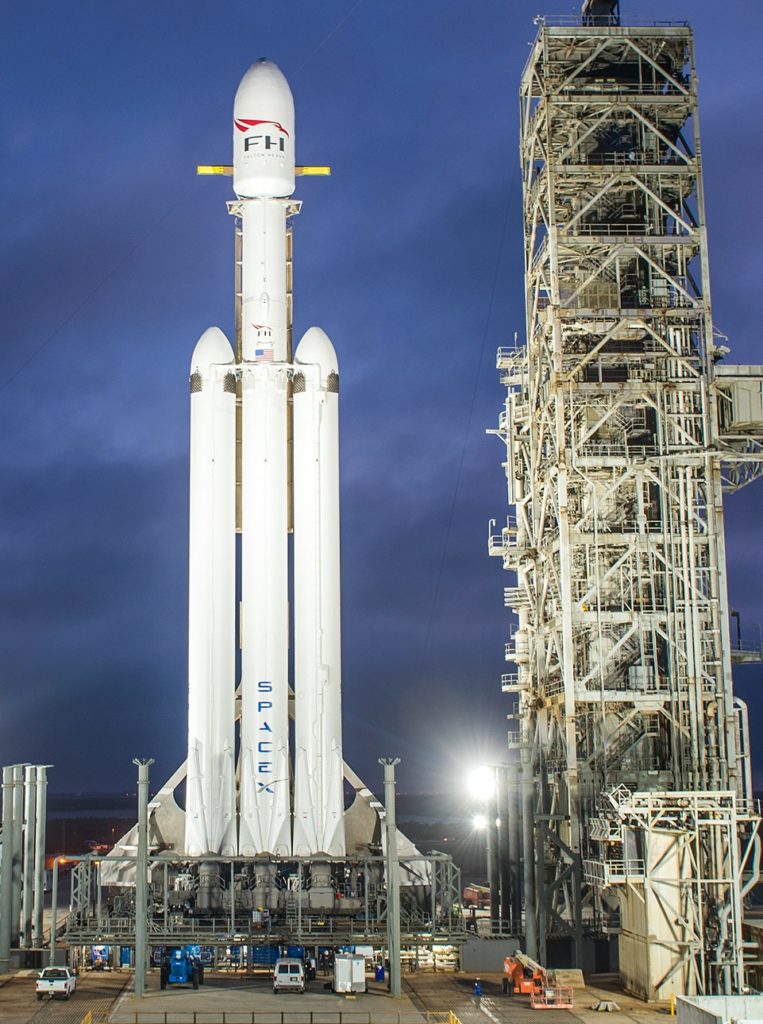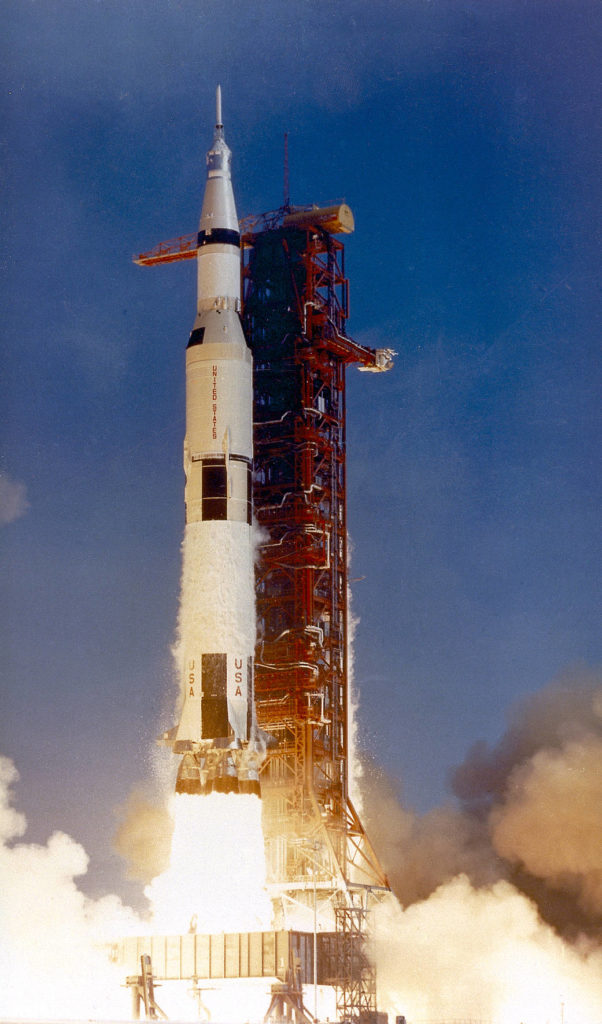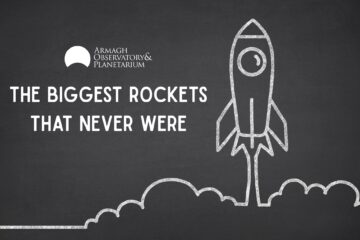
Various nations have produced rockets of different shapes and sizes down through the years, but a question that often comes to the fore is which was the biggest of them all?
As it takes objects with a large mass a considerable amount of energy to move against the pull of Earth’s gravity, especially from standstill, vehicles with a space-bound trajectory are compelled to become predominantly fuel tank with a comparatively smaller payload mounted on top. If a space-bound payload however has a greater mass than usual, then even more fuel is needed to counteract the force of gravity. The problem with this of course, is that the greater volume of fuel just adds to the overall mass of the rocket, in turn requiring yet more fuel to lift both the rocket and the fuel off the ground!
It’s easy to see therefore how rockets, depending on their cargo, rapidly scale up to be, in some cases, tremendously large, and heavy. A very large payload or a destination requiring substantial acceleration to get there, such as the highest levels of Earth’s atmosphere or beyond would require such a rocket. A set of missions that necessitated both were those of NASA’s Lunar program, the Apollo Missions.

These ambitious missions sought to land a human on the Moon for the first time in the history of mankind and return that human to Earth safely afterwards. This task inevitably presented a whole host of challenges, one being that the rocket used would not become too heavy to lift its own weight. The ingenious solution was to make fuel tanks for 3 separate rockets. These rockets combined their powers by stacking up, one on top of the other for the titanic endeavour of launching a Lunar Lander Module, Command Module, Service Module, 3 astronauts and in later missions – a Lunar Roving Vehicle to a destination 384,400km away from Earth. Each part of the 3-rocket combination were called stages, detaching when spent to reduce the overall load which the ‘next rocket’ then drove forward. The first rocket stage was the largest, measuring 42 metres in height and making up the base of the rocket. Filled with liquid kerosene and oxygen fuel it powered the entire rocket away from the launchpad with 5 engines that the US Airforce considered too powerful for any of their needs, Rocketdyne’s mighty F-1 engines.

These huge engines, taller than a female giraffe, burned 15 tonnes of fuel a second producing an incredible 7,500,000 pounds of upward thrust. With flames reaching longer than the Eiffel Tower, this 36-storey colossus blazed to 61km above sea level within 2.5 minutes, before five J-2 engines of the second stage came to life. These engines previously hidden from view in the middle of the rocket then powered on to take the remainder of the vehicle to 185 km from Earth in 6 minutes.
The third stage, the final and smallest of the stacked rockets, powered by one J-2 engine then took Saturn V’s payload up to 40,000km/h, fast enough to send it to the Moon. The Saturn V rocket (named C-5 while still in development) was made from aluminium, polyurethane, asbestos, cork and titanium, and had approximately 4 times the load-lifting ability of NASA’s latter flagship vehicle, the Space Shuttle.

For many of us the stats for the Saturn V rocket may simply be too big to get our heads around. At 2,800,000kg on the launchpad (fully fuelled), this super heavy-lift launcher weighed almost 16 times the weight of the largest and heaviest animal on planet Earth, the Blue whale, which weighs in around 177 tonnes. Standing 10 metres wide, and a towering 111 metres high, it was 18 metres taller than the Statue of Liberty. This gargantuan American rocket was launched 13 times between 1967 and 1973, took NASA’s first space station, Skylab to Low Earth Orbit and remains the biggest, heaviest and most powerful rocket ever to fly to Space.




0 Comments